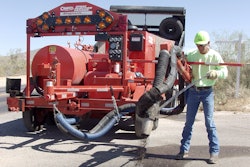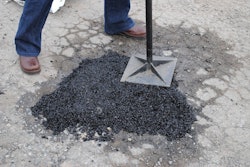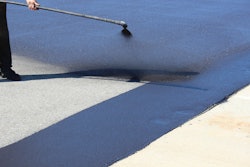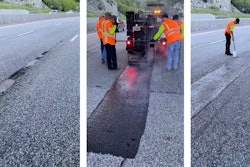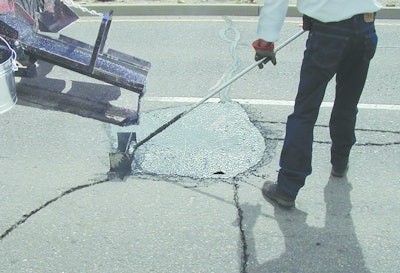
As paving and pavement maintenance contractors, you encounter many different kinds of distresses in the pavement. How you treat these distresses will vary on the severity and cause of the problem. Knowing the different options to treat varying levels of pavement distress can help improve your business and better serve your customers, as matching the repair method to the client's expectations is essential.
Mastic sealant is one option that can be used in pavement repair. This pour-and-go solution is a hot-applied, single-component, pourable, aggregate-filled, polymer modified asphalt binder with engineered aggregate. These treatments are used to repair distresses larger than those typically repaired by crack or joint sealing, but smaller than repairs requiring remove-and-replace patching procedures. Typical uses include filling and leveling of wide transverse or longitudinal cracks and joints, filling potholes and utility cuts, localized skin patch repairs and leveling bridge approaches or faulted areas. When properly applied, mastics form a well-bonded, flexible, durable and traffic-resistant repair that has a service life greater than 5 years.
Melt it Down
With a mastic sealant patch, the area should be clear of debris, clean and dry before application. Mastic sealant can be placed in all temperatures as long as the minimum pavement temperature is 40°F (4°C). Should the pavement temperature be less than 40°F (4°C), the pavement can be warmed by heating with a hot air lance. Since mastic materials contain aggregate, melter applicators that use pumps for their delivery system cannot be used. Contractors using this type of material will want to use a melting machine that is designed to heat, agitate and apply the material, such as the Crafco Patcher I or Patcher II.
Once mastic is heated, it’s poured directly into the distressed area. Once cooled, the pavement is ready for traffic within 30-60 minutes depending on the depth of the distress and other factors.
These types of repairs are typically great for small crews and can be scaled up as projects increase in size. A two-person team can completely and quickly repair the distress. Minimal training is involved to get started using hot mastic; just clean, pour and go.
This solution is significantly more simple than using hot mix asphalt (HMA). Those jobs typically require a larger crew, compaction, more than one vehicle, additional fuel, etc., to complete jobs. Also, HMA typically does not bond as well as hot mastic to existing pavement. Often HMA repairs do not last a full year whereas mastic repairs can last five years and longer.





